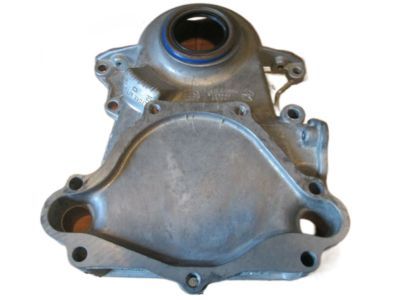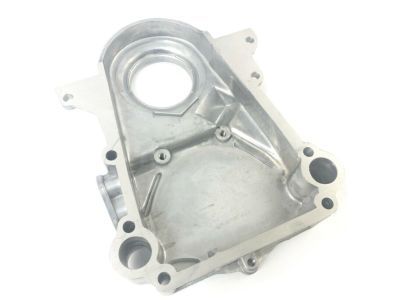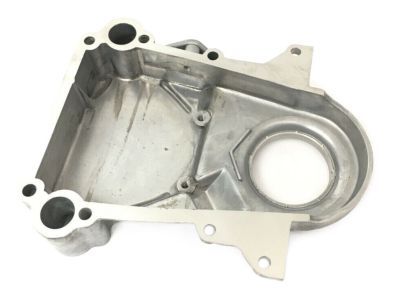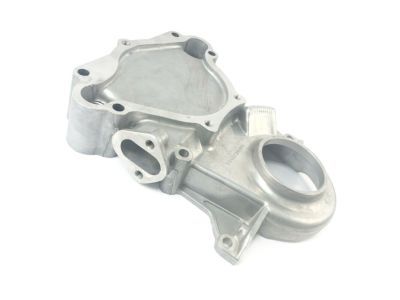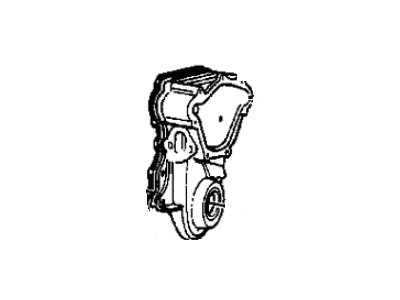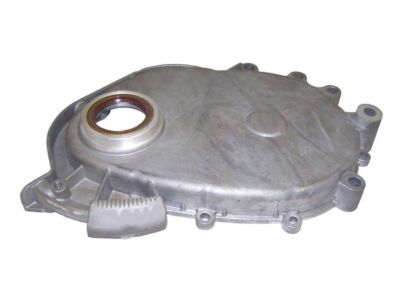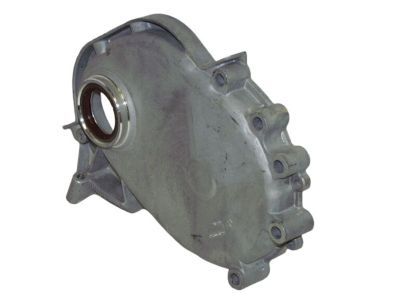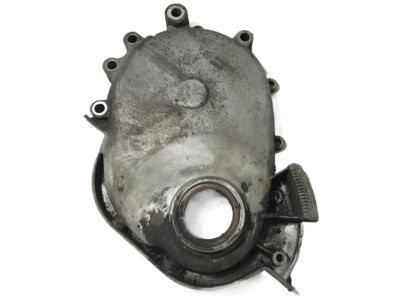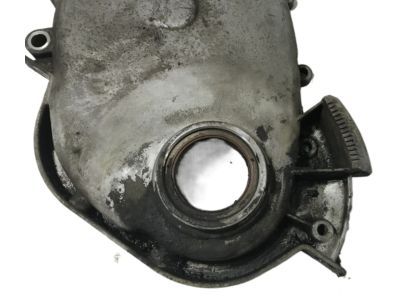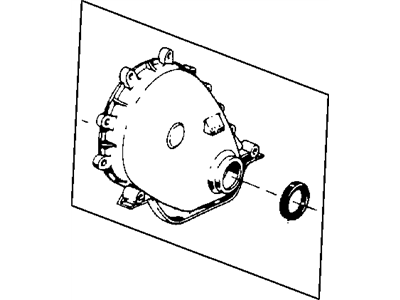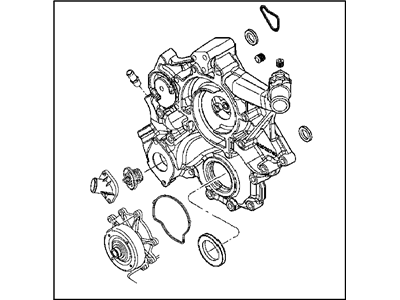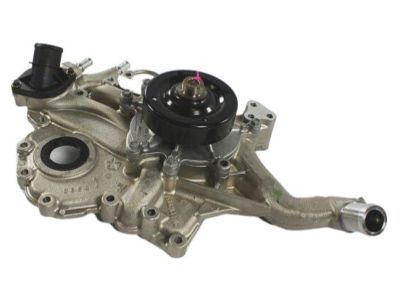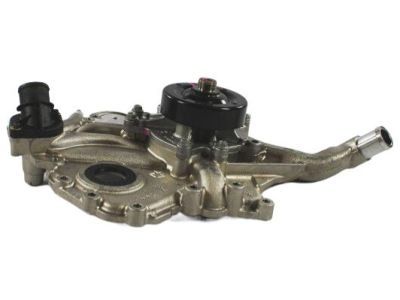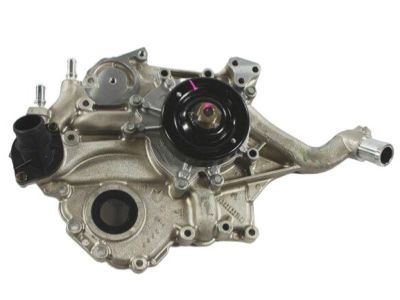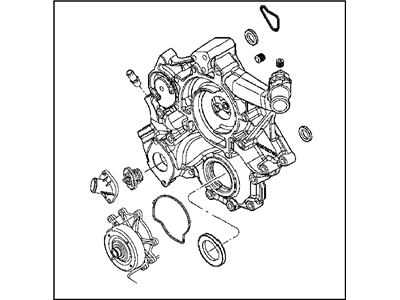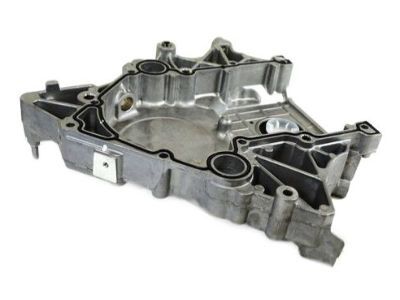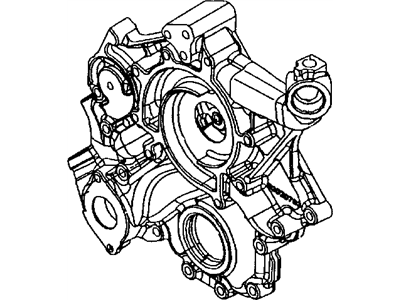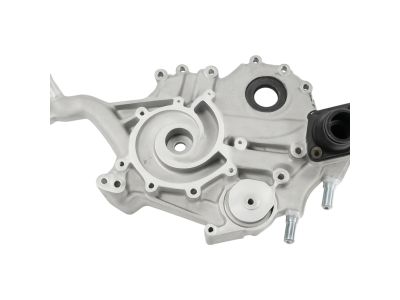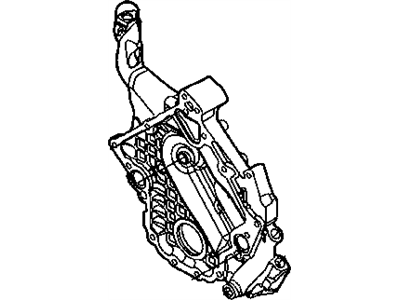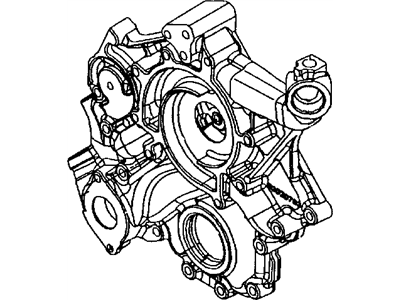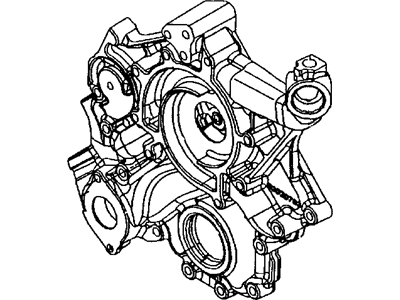
My Garage
My Account
Cart
Genuine Dodge Dakota Timing Cover
Engine Timing Cover- Select Vehicle by Model
- Select Vehicle by VIN
Select Vehicle by Model
orMake
Model
Year
Select Vehicle by VIN
For the most accurate results, select vehicle by your VIN (Vehicle Identification Number).
9 Timing Covers found
Dodge Dakota Timing Cover
The Timing Cover of Dodge Dakota vehicles plays a very important part in protecting the timing mechanism of the vehicle's engine which employs use of a timing belt, timing chain, or cam belt. Made of durable material like aluminum, plastic or steel the Timing Cover shields the area from corrupting elements that may harm the inner parts. Most Dodge Dakota Timing Covers have added features of gaskets that offer further safeguard of the timing belt. Several types of Timing Covers have been used in Dodge Dakota, several types distinctively depending on the engine type in the automobiles. These being hard wearing, they can degrade prematurely thus requiring regular replacement to ensure safe usage of the vehicles. For the enhancement of the durability and functionality of the Dodge Dakota, it is mandatory to take time and perform maintenance of the Timing Cover.
Looking for affordable and high-quality auto parts? Then you have already arrived at the proper online shop. We offer all Dodge Dakota Timing Cover at great affordable prices. Moreover, all genuine Dodge Dakota Timing Cover come with a manufacturer's warranty. In the long run, you would realize you have saved a lot of trouble and money with OEM parts from here.
Dodge Dakota Timing Cover Parts Questions & Experts Answers
- Q: How do you remove and reinstall timing chain and Timing Cover in 5.7L V8 engine on Dodge Dakota?A:Components removal is usually done after disconnecting the cable, with reference to the battery's negative terminal, draining of the cooling system and the engine oil. Then, take off the air filter housing, resonator, air intake ducts, drivebelt, engine cooling fan and upper as well as lower radiator hoses. Remove the air conditioning compressor bolts and screw the air conditioning compressor loose from the hoses so the compressor can be tied with rope or wire away from the engine. Proceed by the further removal of the alternator, coolant reservoir, drivebelt tensioner, idler pulleys, the vibration damper, and the power steering pump although the hoses remain connected. Take out the dipstick tube, the Oil Pan and the pick up tube; unbend the heater hoses; take off the water pump. Remove timing cover bolts, and then front cover and the oil pump. Reinsert the bolt to crankshaft and rotate the crankshaft until there is the correct alignment of timing marks. Remove the tension of the chain by pulling it back and fixing it by using a drill bit on a piece of metal then you take off the Camshaft sprocket bolt and the timing chain with the sprockets attached to it. Check for any signs of wear or faults in the camshaft or crankshaft sprockets and as already indicated if a new timing chain is required, then the entire set should be changed. To install, use a rag placed at the oil pan opening, clean the area and press the tensioner before fixing the camshaft thrust plate in place. Fit the timing chain and sprockets in the order specified in the workshop manual and check that the timing marks are in position, then apply its to the camshaft sprocket bolt thread locking compound and lubricate the timing chain. After taking the drill bit from the tensioner, fit the oil pump and pickup tube and the timing cover and its gasket. Use RTV sealant where ever needed, put the timing cover in place and then the oil pan. Grease the hub of the vibration damper and then place it back into position; proceed in the opposite manner of that which was described above. Last but not the least, pour some coolant and engine oil, start the engine and look for any signs of leakage.
Related Dodge Dakota Parts
Browse by Year
2011 Timing Cover 2010 Timing Cover 2009 Timing Cover 2008 Timing Cover 2007 Timing Cover 2006 Timing Cover 2005 Timing Cover 2004 Timing Cover 2003 Timing Cover 2002 Timing Cover 2001 Timing Cover 2000 Timing Cover 1999 Timing Cover 1998 Timing Cover 1997 Timing Cover 1996 Timing Cover 1995 Timing Cover 1994 Timing Cover 1993 Timing Cover 1992 Timing Cover 1991 Timing Cover 1990 Timing Cover 1989 Timing Cover 1988 Timing Cover 1987 Timing Cover
